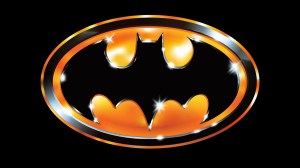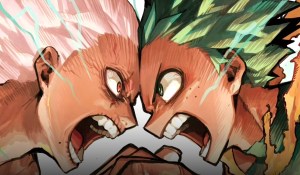
If there is hallmark of Rob Williams‘ work on Suicide Squad, it is how he humanizes the characters. He sometimes has a few too many things spinning in the air, but he always manages to bring an authentic vulnerable humanity to the characters. In Suicide Squad #40, that humanity is what brings together everything that’s been building since #35 to pack an emotional punch that manages to do what sometimes feels impossible: give readers a new understanding and appreciation of Amanda Waller without letting her off the hook.
Videos by ComicBook.com
The issue does this by picking up with the major cliffhanger from last issue — The Wall bursting into a Detroit hospital and announcing that he is going to kill Waller’s daughter Coretta and her newborn daughter too — but not directly. Before dropping readers into the intense scene, Williams takes us back to another hospital room and another new mother; a version of Waller that is a stranger — wife and mother. Every character, be they hero, villain, or questionable authority figure, has a history and a motivation, and Waller’s turns out to be painfully human.

But it’s not just Waller’s humanity that drives this issue. Once dropped back into the Detroit hospital room, The Wall is also shown to be human. Whoever is controlling Prohaska may have their own agenda, but they aren’t entirely unfeeling. Going after Coretta and the infant? There’s more to it. It’s no spoiler to say that this entire arc, and honestly everything from issue #35 onward, has been about Waller, and this issue makes that very clear. It’s Waller that The Wall is after. It’s Waller who is the one person allowed to negotiate with the lives of her children and grandchild in the balance along with everyone else in the hospital.
Realistically, The Wall’s motivation and demand is a little cliche — readers have likely seen the ultimatum of Waller choosing her career or her family coming for awhile. The twist about who is behind The Wall going rogue is also a little predictable. It turns out that Hack has taken over The Wall and is using him to exact her own desperate revenge on Waller, but even with that not being a huge shock, it doesn’t take away from the story. Waller ultimately chooses her family over her secrets with a declaration that, until this issue would have seemed like a foreign concept for the character not known for her warm maternal side. When Waller declares, “I’m a mother. I protect people,” something just clicks. It does for Hack as well. Her revenge seemingly no longer everything she had hoped it would be.

That’s not to say that the issue reduces Waller to a mama bear, though. Williams tempers the fiercely emotional moment by having Waller be every bit the person we know her to be. She may have chosen her family over her secrets, but she didn’t really let anything slip. Hack didn’t send the files, and it’s revealed that whatever information she had? Wasn’t real anyway. Waller always has a plan to cover herself, and her Black Folio was no exception. The files were fake. The real ones were probably in plain sight.
However, even with that sudden reversal of any goodwill readers may have felt for Waller, Williams is still making humanity the focus. Hack, so deeply hurting and scarred by her experiences and death, was so focused on evening the score that she didn’t get quite what she needed. Waller, despite still being a deeply questionable and flawed figure with her rabid fixation on her version of right and wrong, is shown to be emotionally marked by the entire experience. When she realizes that June Moon is dead and Enchantress is truly gone, the mighty Waller is seen having a sense of compassion for her family — one that may have somehow opened a small door for a long, difficult path for redemption… someday.
While Williams’ writing is beautifully crafted, it’s Jack Herbert’s art that anchors the issue. Each expression on the characters’ faces tells a story of its own, but one specific panel, where Waller holds her granddaughter for the first time and is reminded of those she’s lost as well as all the promise the future holds is perfect. It’s Herbert’s art with Hi-Fi’s colors that make that moment perhaps the most powerful in the entire issue — and, arguably, any issue of Suicide Squad thus far.
Overall, Suicide Squad as a title has ups and downs, and is sometimes dramatically uneven, but Suicide Squad #40 is by far the series’ strongest issue to date and gives readers a real reason to invest their time. This installment serves as a solid reminder that, even among the most questionable of “heroes,” there is heart, which is something that is often lacking in stories about Task Force X.
Published by DC Comics
On April 25, 2018
Written by Rob Williams
Art by Jack Herbert
Colors by Hi-Fi








